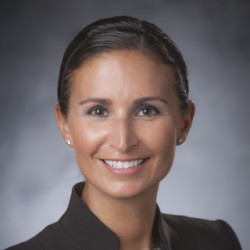The Annual Meeting for the American Society of Breast Surgeons (ASBrS) is one of the final meetings of the academic year for breast surgeons. This year, I was fortunate to attend most of the “big” meetings, but I always look forward to the ASBrS meeting in particular, and it was definitely another great conference! I was told that they had their highest attendance on record, and I am certain that every attendee learned a few new things. My traditionally favorite sessions of this conference, including the debates and the best papers by Dr. Pass, were outstanding as always, full of content and even some entertainment! Of note, I will never agree to a debate at ASBrS…!!! However, there were also a few other sessions/encounters worth highlighting this year.
One set of popular topics this year was oncoplastic techniques, aesthetic flat closures, and alternative options for closing mastectomies. Although I operated with ~15 different breast surgeons throughout my training at 3 different institutions, I did not have significant exposure to many of these techniques. I have been planning to take an official oncoplastics course, but haven’t been able to find the time. However, during the general session this year, there were several lectures on various techniques that I feel confident can be incorporated into my current practice. I am fortunate to work with a group of talented plastic surgeons, and after briefly mentioning some of these techniques to one of my colleagues, he quickly agreed that we can and should be offering more options to our patients. Although I have only been back at work for a week, I am already looking for patients that may be interested and good candidates for some of these updated techniques. I firmly believe that we should always look for ways to improve, and our operative technique and approach is no exception. For me, it is time to do better!
Given my own research interests in older women with breast cancer, another session that was particularly intriguing to me was the scientific session, which featured several of my colleagues presenting their own research in this population. Dr. Elizabeth Berger gave a fantastic talk on “Patterns of Surveillance in Women with Elderly Breast Cancer”, which assessed whether older women who are treated for breast cancer benefit from routine surveillance after treatment. To achieve this, they evaluated longitudinal patterns of surveillance mammography by life expectancy among women with a history of breast cancer treated at an older age (age ≥70) and then quantified the risk of a subsequent breast cancer by life expectancy using SEER-Medicare data. In this population-based study of nearly 44,000 women, mammograms were actually quite common, yet the cumulative risk of a second breast cancer was low, although it did vary by molecular subtype. In conclusion, the authors suggest that competing mortality risk should be considered when recommending ongoing surveillance. Similarly, this same population with competing mortality risks (i.e. older women with breast cancer) was examined by Dr. Ton Wang and colleagues, but more specifically sought to determine if there had been de-implementation of adjuvant radiotherapy and sentinel lymph node biopsy (SLNB) since 2020, which may have been prompted by the COVID-19 pandemic. In this prospective single institution analysis of >800 older women (age ≥70) with breast cancer, de-escalation of radiotherapy was observed since the pandemic, but de-escalation of SLNB was already underway prior to the pandemic. Interestingly, the observed trends continued for 2 years following the acute resource limitations, suggesting sustained changes in practice patterns which requires further investigation. Taken together, these studies continue to suggest that precision medicine should be applied to patients of all ages, and there is unlikely to be a “one-size fits all” approach that works for all older patients with breast cancer.
The last conference highlight came during a chance encounter in the hallway with the infamous Dr. Mark Gittleman. Although a former breast surgeon with innumerable accolades, he is now retired from surgery, and one of his favorite hobbies is photography. In browsing his official photography website, he appears to be almost as impressive as a photographer as he was a surgeon! During the conference, select photographs/prints were available for purchase, and a percentage of every purchase was donated to the ASBrS Foundation (a 501c3 charitable organization affiliated with the ASBrS). Fascinated by his work, we began discussing my own interests in photography and plans to also dive deeper into the field upon retirement (albeit not for another 20+ years). To my surprise, he then sent me an email this week stating that the leadership for ASBrS may be interested in having a photography course at next year’s meeting, and I certainly hope this comes to fruition!
All in all, it was another incredible conference! However, I am thrilled to be back home with my family (missed my young daughters quite a bit!) and ready to move forward with the knowledge and excitement that I gained from the meeting! Although the ASBrS Annual Meeting comes late in the academic season, it is always worth the wait, and I’m already looking forward to next year!
Dr. Plichta has no conflicts of interest to report.
Illustration by Jennifer Bogartz







